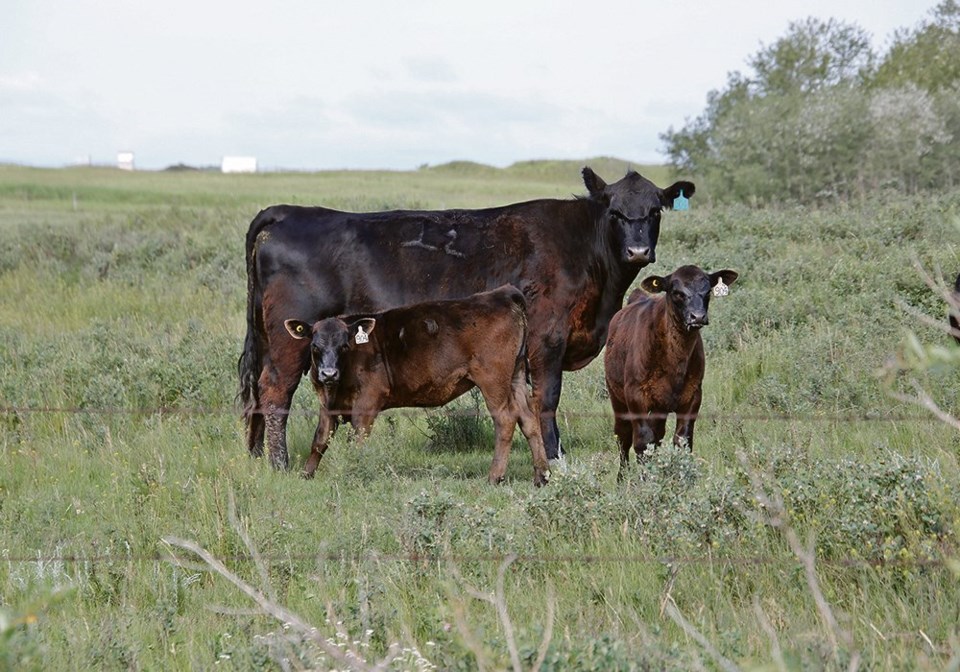WESTERN PRODUCER — Coccidiosis is a common parasitic disease in western Canadian beef and dairy herds that can cause significant disease outbreaks and economic losses.
The primary clinical signs are usually diarrhea, unthriftiness and poor growth rates. It can infect all farm animal species including poultry, pigs, sheep and cattle.
However, the parasites that cause coccidiosis are host specific, in that there are species of the parasite that only infect cattle and other species that only infect sheep.
Coccidiosis is caused by a single-celled microscopic parasite that develops inside the intestinal cells of the infected animal. The infective form of the parasite, known as the oocyst, is found in the feces of infected animals.
Calves and lambs can become infected shortly after birth by ingesting feces from contaminated udders.
Coccidia oocysts are present in the soil, vegetation or water sources of virtually all sites inhabited by cattle or sheep. The oocysts can remain infective in the environment for weeks or months depending on the environmental conditions.
Older animals tend to become immune to the parasite, although they will still carry the organism in their intestinal tract and may be responsible for starting infections in younger animals.
In a young calf with no previous exposure, the organism can multiply at remarkable rates. Some calculations suggest that a single oocyst could result in the excretion of close to 30 million oocysts, just through the multiplication process of the lifecycle of the parasite within a single individual calf.
The clinical signs in calves suffering from coccidiosis are a direct result of the damage to the intestinal cells caused by the parasite.
It usually takes 17 to 21 days for the parasite to go through its lifecycle so we tend to see clinical signs in calves that are three weeks of age or older.
Occasionally, coccidiosis can also be a significant problem in recently weaned calves in confinement.
Affected animals will have thin, watery feces with streaks or clots of blood. Severely affected animals may become depressed and dehydrated and straining during defecation is common.
The diagnosis of the disease is usually based on evaluating the clinical signs as well as microscopically counting the oocysts of the parasites in a fecal sample.
One of the most common preventive treatments prescribed by veterinarians in Western Canada is a drug called toltrazuril.
Scientific studies have shown a single oral dose of this drug given to young calves can decrease the presence of diarrhea, reduce the number of oocysts excreted in calves and improve weight gains. Although many of these studies have been carried out in dairy calves, there are some studies in beef calves that show very similar results.
However, as with any parasite control drug, the problem of the potential of developing resistance may be of concern.
Recently, several scientific publications from researchers in Norway have demonstrated the potential of resistance developing in Eimeria species of sheep to toltrazuril. These researchers used a unique approach by taking lamb twins and treating one lamb with toltrazuril while the other lamb received a placebo. They then evaluated the number of coccidia oocysts before and after treatment to see if toltazuril was still effective. The results suggested that on at least two of the 20 farms evaluated, toltrazuril seemed to be less effective than previously established (less than 50 percent reduction of oocyst count).
On five farms, the reduction of oocyst counts in the toltrazuril treated lambs was intermediate at 50 to 75 percent, and in the other 13 farms, the toltrazuril reduced oocyst counts by more than 75 percent.
Other factors could be at play. Several herds in this study did not perhaps have optimal timing for administration of the drug, which may have limited its effectiveness. Underdosing caused by estimation of lamb weights could also be a factor that might limit effectiveness.
Finally, any parasite control product can be less effective if other stressors such as weather, confinement, crowding and manure hygiene are significant issues.
However, despite these limitations, the authors suggest that there may be some evidence that the coccidia parasites in these sheep may be developing some potential resistance to the drug toltrazuril.
This has not been identified in calves in a North America setting, but it is something to at least be aware of as a possibility in the future. Currently, toltrazuril is one of our most effective products at controlling coccidiosis in calves and many veterinarians and producers are using this product on a regular basis in their herds.
Whenever a parasite control product is used on a population basis over a long period of time, the possibility of developing drug resistance in the parasite is an issue. If we want to keep this drug effective in the long term, we need to be responsible in its use and only use it in those animals that need the drug.
Making sure we do other things to control coccidiosis, such as spreading out our calving area, having good manure management and maintaining feed and water hygiene, will also be important to make sure our parasite control products like toltrazuril remain an effective option.
John Campbell is a professor in the department of Large Animal Clinical Sciences at the University of Saskatchewan’s Western College of Veterinary Medicine.

